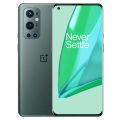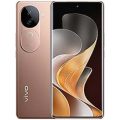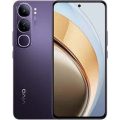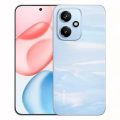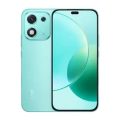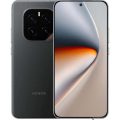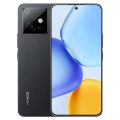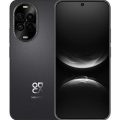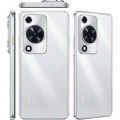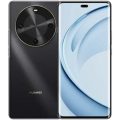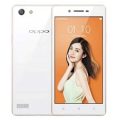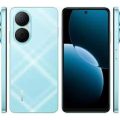OnePlus Nord N300
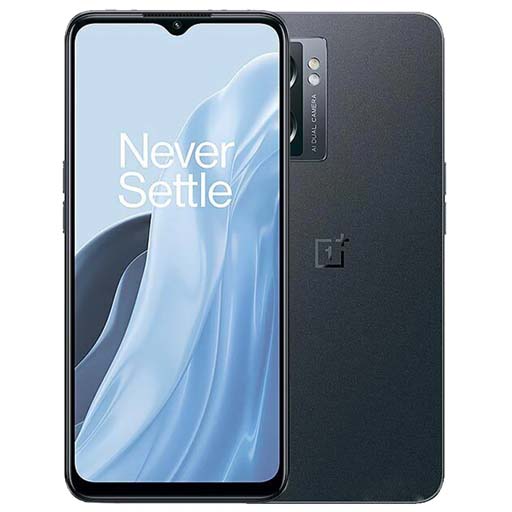


-
Released: 2022, November 03
-
Operating System: Android 13, OxygenOS 13
-
Display: 6.56" 720x1612 pixels
-
Camera: 48MP 1080p
-
RAM: 4GB RAM Dimensity 810
-
Battery: 5000mAh Li-Po
Specifications
Prices
| Official Official | ৳25,000 |
Launch
| Announced Announced | 2022, October 24 |
| Status Status | Available. Released 2022, November 03 |
Network
| Technology Technology | GSM / HSPA / LTE / 5G |
| 2G 2G |
GSM 850 / 900 / 1800 / 1900 |
| 3G 3G |
HSDPA 850 / 900 / 1700(AWS) / 1900 / 2100 |
| 4G 4G |
LTE |
| 5G 5G |
SA/NSA |
| Speed Speed | HSPA, LTE, 5G |
| GPRS GPRS | |
| EDGE EDGE |
Body
| Dimensions Dimensions | 163.8 x 75.1 x 8 mm (6.45 x 2.96 x 0.31 in) |
| Weight Weight | 190 g (6.70 oz) |
| Build Build | Glass front, plastic frame, plastic back |
| SIM SIM |
Nano-SIM |
Display
| Type Type | IPS LCD, |
| Size Size | 6.56 inches, 103.4 cm2 (~84.0% screen-to-body ratio) |
| Resolution Resolution | 720 x 1612 pixels, 20:9 ratio (~269 ppi density) |
| Refresh Rate Refresh Rate | 90Hz |
Platform
| Operating System OS => Every computer system run on a base software called Operating System (OS). Operating System controls all basic operations of the computer (such as smartphone, PDAs, tablet computers and other handheld devices). The Operating System allows the user to install and run third party applications (apps), apps are used to add new functionality to the device. | Android 13, OxygenOS 13 |
| Chipset Chipset |
MediaTek MT6833P Dimensity 810 (6 nm) |
| CPU CPU |
Octa-core (2x2.4 GHz Cortex-A76 & 6x2.0 GHz Cortex-A55) |
| GPU GPU |
Mali-G57 MC2 |
Memory
| Card slot Card slot | microSDXC |
| Internal Internal | 64 GB UFS 2.2 |
| RAM RAM | 4 GB |
Main Camera
| Back Back |
48 MP, f/1.7, 26mm (wide), PDAF 2 MP, f/2.4, (depth) |
| Features Features | LED flash, HDR, panorama |
| Video Video |
1080p@30fps |
Selfie camera
| Front Front |
16 MP, f/2.0, (wide) |
| Features Features | HDR |
| Video Video |
1080p@30fps |
Sound
| Alert Types | Vibration, MP3, WAV ringtones |
| Loudspeaker | Yes, with stereo speakers |
| 3.5 mm jack 3.5 mm jack | Yes |
Connectivity
| WLAN WLAN | Wi-Fi 802.11 a/b/g/n/ac, dual-band, hotspot |
| Bluetooth Bluetooth is a wireless communications technology for exchanging data between mobile phones, headsets, computers and other network devices over short distances without wires, Bluetooth technology was primarily designed to support simple wireless networking of personal consumer devices. | 5.3, A2DP, LE, aptX HD |
| GPS GPS The Global Positioning System is a satellite-based radio navigation system, GPS permits users to determine their position, velocity and the time 24 hours a day, in all weather, anywhere in the world, In order to locate your position, your device or GPS receiver must have a clear view of the sky. | Yes, with dual-band A-GPS, GLONASS, BDS, GALILEO |
| NFC NFC (Near field communication) is a set of standards for smartphones and similar devices to establish peer-to-peer radio communications with each other by touching them together or bringing them into proximity, usually no more than a few inches. | |
| FM Radio | Yes |
| USB | USB Type-C 2.0, USB On-The-Go |
| Infrared port Infrared connectivity is an old wireless technology used to connect two electronic devices. It uses a beam of infrared light to transmit information and so requires direct line of sight and operates only at close range. |
Features
| Sensors Sensors are electronic components that detects and responds to some type of input from the physical environment. The specific input could be light, heat, motion, moisture, pressure and location, The output is generally a signal that is converted to use in computing systems, a location sensor, such as a GPS receiver is able to detect current location of your electronic device. |
Fingerprint (side-mounted), accelerometer, gyro, proximity, compass, barometer |
| Messaging Messaging | SMS(threaded view), MMS, Email, Push Email, IM |
| Browser Web Browser => a web browser is a software application used to locate, retrieve and display content on the World Wide Web, including Web pages, images, video and other files, The primary function of a web browser is to render HTML, the code used to design or markup webpages. | HTML5 |
| Java Support Java for Mobile Devices is a set of technologies that let developers deliver applications and services to all types of mobile handsets, ranging from price efficient feature-phones to the latest smartphones. Java is currently running on over 3 billion phones worldwide, and growing. It offers unrivaled potential for the distribution and monetization of mobile applications. |
Battery
| Battery Type Battery Type => Cell phones run on various kinds of batteries depending on the manufacturer, phone size or shape and features. There are basically four types of cell phone batteries => Lithium Polymer, Lithium Ion, Nickel Metal Hydride and Nickel Cadmium. | Non-removable Li-Po |
| Capacity Battery Capacity is a measure (typically in Amp-hr) of the charge stored by the battery, and is determined by the mass of active material contained in the battery. The battery capacity represents the maximum amount of energy that can be extracted from the battery under certain conditions. | 5000 mAh |
| Charging Wireless Charging (Inductive Charging) uses an electromagnetic field to transfer energy between two objects. This is usually done with a charging station. Energy is sent through an inductive coupling to an electrical device, which can then use that energy to charge batteries or run the device. |
Fast charging 33W |
| Fast Charging Fast Charging | Yes |
More
| Made by Made by | China |
| Colors |
Midnight Jade |

OnePlus Nord N300 — 2025 Bangladesh Comprehensive Review
1. Introduction
The OnePlus Nord N300 arrived as an incremental upgrade in the budget OnePlus lineup, aiming at the sweet spot between affordability and modern features. By 2025 in Bangladesh, it’s become a quiet favorite among budget-conscious students, entry-level professionals, and anyone who values a smooth experience without splurging. The combination of 5G connectivity, a high-refresh display, and a large battery has kept the OnePlus Nord N300 relevant, even as newer models emerged.
In a market where many budget phones still compromise heavily on speed or screen quality, the OnePlus Nord N300 hits a balanced set of strengths: reliable software, efficient battery life, and a crisp display. Despite lacking flagship-level specs, it offers trustworthy performance for everyday tasks like messaging, browsing, streaming, and casual gaming.
This long-form review digs into every aspect of the OnePlus Nord N300—its design, display, performance, camera, battery and charging, software, pricing in Bangladesh (2025), and who it still makes sense for. Let’s find out whether it still holds its ground in the budget segment today.
2. Design & Build Quality
The OnePlus Nord N300 maintains the familiar plastic-and-glass aesthetic of its segment. The body is polycarbonate, but the rear panel is treated with a fine matte finish that resists fingerprints and provides a premium touch. The frame, similarly plastic, snaps together neatly and doesn’t wobble or creak under gentle torsion.
At around 6.56 inches, the display size is manageable, and the overall device weight is approximately 195 grams. Curved edges ease grip fatigue, making extended one-handed usage—like scrolling through social apps or browsing lecture notes—comfortable. Button placement is ergonomic: volume on the left, power on the right, and a small yet useful alert slider sits above the power key—always appreciated on OnePlus phones, and now carried into the budget tier.
One notable feature retained in the OnePlus Nord N300 is the inclusion of a 3.5 mm headphone jack—valuable in 2025 when many mid-range phones have dropped it. Right next to the USB-C charging port is a single speaker grill that handles calls and podcast playback decently—loud enough for small rooms but not a substitute for headphones.
There’s no water or dust resistance rating, but with a matte, easy-grip surface and a reliable build, the OnePlus Nord N300 feels sturdy in daily life. The design is unflashy but practical—durable enough for student backpacks, busy hands, and the occasional tumble without losing its functional integrity.
3. Display & Visual Experience
The OnePlus Nord N300 stands out in its budget class with a 90 Hz IPS LCD panel at Full HD+ resolution. Many rivals still ship with 60 Hz or HD+ screens, so this gives the OnePlus Nord N300 a smoother feel—especially when scrolling through feeds or messaging with rapid finger swipes.
Colors look neutral and balanced out of the box, with subtle warmth that feels pleasant. Viewing angles remain solid, and text retains clarity even at angled views. Contrast won’t match higher-tier OLEDs, and blacks look more like deep gray in dim environments, but the overall screen remains pleasing for normal media viewing or e-books.
Brightness is adequate for indoor and moderately bright outdoor use; under harsh Bangladeshi sunlight, a bit of hand shading improves visibility. The 90 Hz refresh rate isn’t groundbreaking compared to 120 Hz or 144 Hz options today, but it’s noticeably smoother than 60 Hz predecessors, especially during menu navigation or casual gaming.
For content consumption—videos, social media, lecture slides—the OnePlus Nord N300 screen remains an effective workhorse. The lack of HDR and rich contrast is only noticeable when compared directly to higher-end models. Overall, its visual experience is one of the OnePlus Nord N300’s most enduring strengths into 2025.
4. Performance & Everyday Use
Inside the OnePlus Nord N300, users will find a MediaTek Dimensity 810 chipset paired with 4 GB of RAM and 64 GB of storage (expandable via microSD). While not powerful enough for dedicated gaming rigs, this combination provides a reliable daily experience even in 2025.
For typical tasks—social apps, email, simple Web browsing, mobile banking, food delivery, light productivity—the OnePlus Nord N300 remains quick and responsive. App switching is fluid, and RAM management is efficient, with background tasks remaining accessible without sluggish reloads.
Casual gaming like Subway Surfers, Temple Run, and low-graphics shooters run smoothly at medium settings. Tech-heavy games like PUBG or Genshin Impact need settings dialed back. The phone remains cool and consistent with short bursts of higher performance.
Storage speeds are solid; app installs, photo imports, and file transfers complete in reasonable time. For media heavy users like students storing recorded lectures or videos, microSD expansion is a boon, particularly since The OnePlus Nord N300 supports card expansion with seamless storage integration.
Performance remains steady even after months of use—no unexpected freezes. The combination of a smooth display and responsive UI gives a sense of reliability often absent in cheaper alternatives. In 2025, the OnePlus Nord N300 remains a dependable daily performer for its price.
5. Camera Performance
Camera expectations for the OnePlus Nord N300 must be grounded in reality—but even so, everyday photography is functional and satisfying.
Rear setup includes a 13 MP main sensor supported by a 2 MP depth sensor and a 2 MP macro lens. In good daylight, the main sensor captures clean, balanced shots with adequate detail and color accuracy. Dynamic range does its best to manage bright skies and shaded building interiors. Focus is quick, and image processing avoids heavy oversharpening.
Depth mode helps produce respectable portrait shots with simple people backgrounds, not stress-testing strikingly. The macro lens has limited resolution and focus depth—use it for novelty shots of flowers, gadgets, or postage stamps, not for professional detail. The real hero remains the main sensor, and in well-lit Bangladesh daytime, it handles everyday snapshots well.
Low-light photos degrade noticeably: more noise, softer details, and dim illumination. A basic night mode brightens scenes but at the cost of shutter lag. For low-light social shots, the images are shareable but not sharp.
The front-mounted 8 MP selfie camera delivers decent results: natural tones, reasonable clarity in good light. Indoor selfies get soft, but for video calls, social media, and quick framing, it performs adequately.
Video recording caps at 1080p. Stability is modest. Walk-and-talk video leaks shake, but for short clips, it passes muster.
Overall, the OnePlus Nord N300 camera is utilitarian: clear enough for everyday use, functional for documentation, and serviceable for casual social sharing. Not a camera star—but not terrible either.
6. Battery Life & Charging
Battery performance remains a standout feature of the OnePlus Nord N300. A large 5000 mAh cell, paired with the efficient Dimensity 810 chip, delivers consistently long usage.
In realistic daily usage—messaging, occasional music, videos, navigation, and social apps—the device easily lasts a full day with screen-on time between 7 to 9 hours. Light users could stretch to a day and a half. Even heavy users should reach bedtime without anxiety about finding a charger.
Charging is handled via 18 W wired USB-C. In 2025 terms, this isn’t fast enough to rival ultra-fast charging flagships, but it remains dependable. A 30-minute charge yields roughly 40–50% battery, and a full charge takes under two hours. A full overnight cycle in bed is sufficient for daily needs.
What matters more is the OnePlus Nord N300’s pragmatism: you don’t need to reach for a charger midday unless playing high-res games or streaming video continuously. For students, professionals, or travelers in Bangladesh who spend long hours away from home, this endurance is a constant comfort.
Battery longevity is also supported through software: built-in battery care modes that taper charging speed at night help preserve long-term health. Real-life users report retaining over 90% battery capacity after two years—excellent longevity for a budget device.
7. Software Experience & Updates
The OnePlus Nord N300 launched with OxygenOS based on Android 12. As of 2025, it’s running Android 13 or 14 depending on region, with timely security updates—though major updates may have slowed.
The big advantage here is the clean, polished version of Android. Unlike budget phones that pack third-party bloatware, the OnePlus Nord N300 comes with minimal extras: Smart Sidebar, gesture shortcuts, Dark Mode, and app control panels that remain helpful without becoming intrusive.
System animations feel swift—especially with the 90 Hz screen. Notifications are uncluttered. Settings are intuitively organized. App permissions are evenly managed. No forced app recommendations appear in the UI—a relief for excited users who might be exposed to aggressive ads elsewhere.
After two years of use, the software remains stable, with background tasks staying active, daily apps behaving smoothly, and no signs of bloating. The only limitation is that long-term OS upgrades beyond Android 14 may not arrive, but for a budget phone intended for ~3-year lifespan, this suffices.
In Bangladesh, where entry-level buyers often keep phones until replacement becomes absolutely necessary, the OnePlus Nord N300 software reliability becomes a standout asset. It doesn’t just launch fast, it stays fast.
8. Network Connectivity & Features
The OnePlus Nord N300 comes with dependable 4G performance and sub-6 5G support. In Bangladesh of 2025, while 5G coverage isn’t widespread, having that option means staying future-ready for growing network availability. For now, LTE remains reliable and stable.
Wi-Fi connectivity is solid on standard 2.4 and 5 GHz networks. Bluetooth 5.1 pairs smoothly with earbuds and wearables. The inclusion of the 3.5 mm headphone jack preserves headphone freedom. GPS performance (A-GPS with GLONASS) is stable for maps and ride-sharing—even in dense urban areas.
One omission: no NFC. For users relying on mobile wallets or certain NFC functions, it’s a missing feature. But for the larger user base in Bangladesh, where QR-based payments are more common, this isn’t a critical drawback.
Otherwise, the OnePlus Nord N300 covers essential connectivity effectively—no modern feature feel is missing, and what’s present works reliably.
9. Pricing in Bangladesh (2025) & Value Proposition
As of mid-2025 in Bangladesh, the OnePlus Nord N300 typically retails for:
- New/unboxed units: around BDT 23,000 – 25,000
- Refurbished units: around BDT 18,000 – 21,000
- Used units (good condition): around BDT 14,000 – 17,000
At these levels, the OnePlus Nord N300 competes with entry-level brands offering newer processors or slightly better cameras—but it’s backed by smoother software and a reputation for reliability.
For under BDT 25k, the OnePlus Nord N300 offers:
- 90 Hz Full HD+ display
- 5G readiness
- Long battery life with decent charging
- Clean software experience
- Headphone jack + microSD expansion
These no-nonsense features make it a compelling choice for anyone who prioritizes comfort, consistent performance, and low cost of ownership.
If you’re deciding between spending a bit more on a newer spec sheet or keeping to value with trusted stability, the OnePlus Nord N300 is a balanced way to save money while still getting a modern, usable phone.
10. User Scenarios & Longevity (Approx. 200 Words)
Here are realistic user scenarios where the OnePlus Nord N300 continues shining:
- First smartphone after a flip phone or basic feature phone: Easy to pick up, with familiar physical controls and headphone support.
- Student device: Comfortable for scrolling class materials, registering for classes, watching tutorial videos, and staying connected across messaging apps—on a reliable battery.
- Secondary/travel phone: Lightweight, durable, and long-lasting—ideal for trips, ride-share SIM lines, or back-up for overseas SIMs.
- Parent or senior user: Simple UI, reliable performance, and solid battery life reduce frustration and tech fatigue.
- Budget-conscious user replacing a cracked device: Still smooth, dependable, and affordable without needing to cut budget just for performance.
For users with moderate expectations—no need for ultra-fast chargers or flagship camera systems—the OnePlus Nord N300 remains a trusted companion. Many owners report using it comfortably for over two years, even in the absence of frequent major updates—simplicity and consistency pay dividends.
11. Pros & Cons
Pros of OnePlus Nord N300:
- Smooth 90 Hz Full HD+ display
- Clean and responsive software experience
- Long battery endurance and stable 18 W charging
- Support for 5G readiness, microSD, headphone jack
- Durable, understated design appropriate for everyday use
- Excellent value at sub-25k BDT price point
Cons of OnePlus Nord N300:
- Basic camera performance in low light
- Limited RAM and storage for future-proofing
- No water resistance, no NFC—all optional, but missing
- No major OS updates beyond Android 13 or 14 likely
- Single speaker, modest audio volume
These are transparent trade-offs—not deal-breakers, but important to weigh when choosing between budget phones.

12. Final Verdict
If you’re shopping in Bangladesh today for a phone under BDT 25,000, the OnePlus Nord N300 deserves serious consideration. It pairs dependable real-world usability with enough feature richness—5G support, smooth screen, long battery, clean software—to remain enjoyable long after purchase.
Yes, it’s not a spec sheet champion—no flashy camera arrays, no rapid charging, no waterproofing—but it presents a deeply consistent experience. In the real landscapes where students, busy professionals, or budget buyers operate, that matters more than raw numbers.
For the OnePlus Nord N300, the enduring philosophy of OnePlus remains: fast, smooth, and value-oriented, filtered through pragmatic hardware choices. In 2025, that formula still resonates with users who want good performance without overspending.
Put another way: a reliable, stable phone that comfortably handles daily life, without hidden ads, without sudden slowdowns, and without need for constant updates—that is the OnePlus Nord N300’s quiet legacy. And it continues delivering that quietly, two years later, in the busy digital life of Bangladesh.
Reviews
Disclaimer Note
We always try our best to keep our website content and information updated and correct, the material and information contained on our website is for general information purposes only, You should not rely upon the material and information as a basis for making any business, legal or any other decisions.

